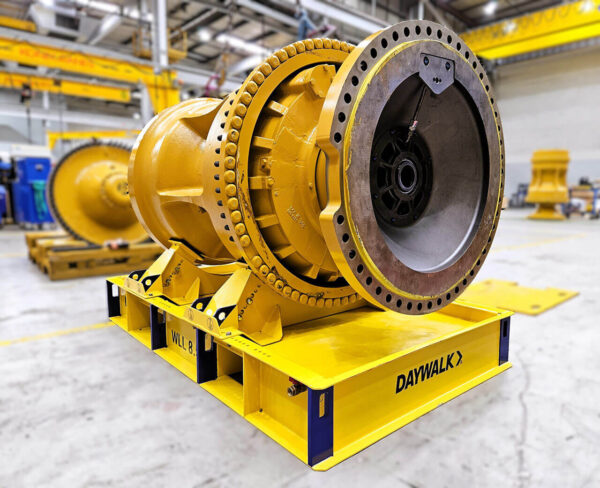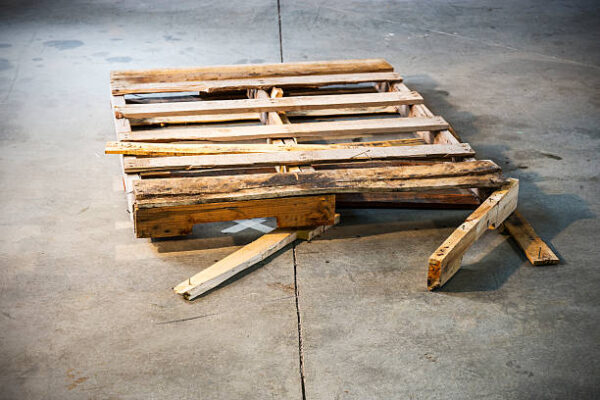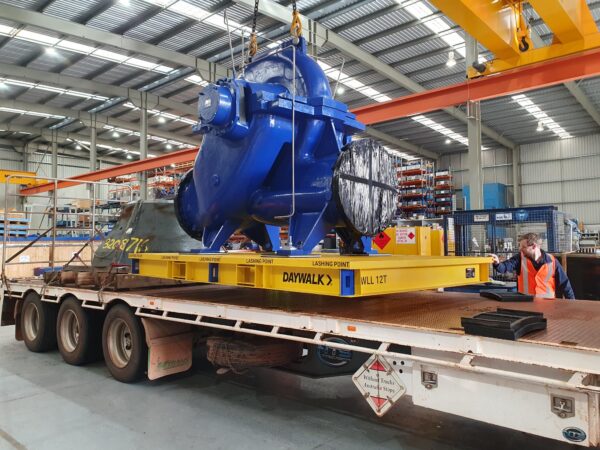Maintaining and running a large warehouse can take up a lot of work and time, especially when it comes to the nitty-gritty of equipment and processes. This article seeks to break down some of the key issues of warehouse maintenance and provide solutions where possible. Let’s get started.
One key issue is the damage brought on by extensive corrosion and deterioration. Are there any solutions on the market that can help mitigate the effects of the elements on big gear?
A solution is to remodel the racking, shelving, and other storage systems or arrangements present in the warehouse. See if there are areas that can be optimised and work from there before deciding to add another warehouse for your stocking needs. “Lean” practices involve cutting down on the clutter, which can necessitate input from stakeholders regarding repair histories for gear, as well as identifying critical spares.
Reassessing the available stock items and removing redundant or obsolete stock can also free up considerable space on your warehouse floor (provided warehouse stakeholders are on board with the stock removal; always double-check!).
Another is to increase vertical storage for smaller components, which condenses shelving and also relieves floor space.
However, these solutions might not work for big gear, which is where racking comes in. Omni-tuff provides solutions for this concern through Pallet Racking and A-Frame Racking, which are designed specifically for long-length items.
In cases where additional warehouses are absolutely necessary for storage space, it’s ideal to measure twice, then cut once. This practice involves measuring all storage units, such as pallets and cages, and then “cutting” out the space for these units in the planned additional space to give adequate spacing for the units. The Australian Standard, as well as the AS4084:2012, outlines this practice more clearly.
Say the storage situation is now resolved, and there is adequate space to store components, gear, and critical spares. Next comes stock protection – this includes individual weather covers, for situations where high-value equipment needs individual protection from the elements and other external factors. Tarpaulins are a common type of cover, and comes in a variety, such as UV-stabilised canvas-type covers. Tarpaulins can also be custom designed and fitted, which allows for cover flexibility, as opposed to simple square cover and lashing.
Tarpaulins, however, tend to have flapping no matter how creative the lashing. This is where low-density polyethylene (LDPE), also known as heat shrinkable plastics, come in. Heat shrink plastics fit to the shape of the gear or equipment, which provides superior coverage, thus providing better protection from external damage as well.
Heat shrink plastic is typically supplied in three main styles, as follows:
- sheet
- tubing
- bags
LDPE is manufactured by a molten bubble of plastic being blown; the bubble of plastic is then drawn up by means of multiple rollers that form the plastic while it’s cooling. Some of the manufacturing plants that produce LDPE are up to nine or one-thirteen metres tall to handle the process correctly. The product is then fed down again towards the factory floor and then rolled into a bulk roll. The size of the ‘bubble’ that is blown will determine the girth of the plastic. On the other hand, large-sized engine bags require larger bubbles, a different process cuts the sheets and merges them together to form the larger bags.
For the plastic sheet (also known as LDPE sheet), there will be a bubble blown then there will be a knife cut in the process, so that the final product will be folded out to a single sheet. Plastic sheets can be a very popular option for protecting large items. The beauty of heat shrink plastic is that the cover can be whatever size is needed. Once the heat of the gas or 3-phase electric gun is applied, the plastic becomes tacky and sticks to itself, thus making it possible to form a cover over any shape or size piece of equipment.
Two popular widths of sheet are as follows:
- 2.4m
- 5.4m
Meanwhile, tubing is a continuous product that can be cut up for the desired length. Tubing is a long tunnel that one can crawl through, as there are no sealed-off ends like there are in a bag format. Tubing can be a cost-effective option for operations processes that involve varying height pallets and consignments. To measure the correct length needed to make a bag, do the following:
- Measure the height of the consignment including the pallet or skid that the product is sitting on.
- Add approximately 200mm to this dimension to allow material a hem underneath the product.
- If the consignment is on a full-size pallet, as in approximately 1200mm x 1200mm, add a further 600mm (width of 1200 divide by 2) to allow the plastic to come together at the top of the pallet.
- Add a further 50mm to allow for the weld at the top of the bag.
Once you have measured the tubing correctly, cut the plastic at the calculated length, then lay the plastic flat on the ground, ensuring that there are no puckers or uneven pieces to make sure that the top joint is of good quality.
With a gas-powered or 3-phase electric gun, melt the two layers of plastic at the 50mm allowance area. Make sure to completely join the two layers to prevent holes or tears that will allow air, water, or other elements to seep through.
Once this process is completed, the newly made bag can be used as a raincoat, can be heat shrunk around the consignment, which makes for a more secure ‘parcel’. When heat shrinking the bag, it’s good practice to place the pallet on chocks of timber or on a turntable; this effectively hems the plastic under the consignment and ties the goods to the pallet, which is a very effective restraint method.
There are a number of tubing sizes available, as follows:
- 1220mm + 1220mm (this is a gusseted tube that has an overall girth of 4880mm)
- 1500mm + 1200mm (this is a gusseted tube that has an overall girth of 5400mm)
- 2000mm lay-flat tubing (girth of 4000mm)
- 1500mm lay-flat tubing (girth of 3000mm)
- 1000mm lay-flat tubing (girth of 2000mm)
- 750mm lay-flat tubing (girth of 1500mm)
- 400mm lay-flat tubing (girth of 800mm)
- 300mm lay-flat tubing (girth of 600mm)
- 200mm lay-flat tubing (girth of 400mm)
Then there are bags. Bags are often the most popular option, as the seal and perforation are already pre-made. Pallet bags are usually the most user-friendly option, but for some operations, the trade-off is that the bag is not as flexible as tubing because of ts pre-set length. Thus, if some pallets are of differing heights, there could be plastic wastage.
Pallet bags also lend themselves to being used as a raincoat, as the operator can simply place the pallet bags over the product, and the pallet bags can be reused besides. A CamLock re-usable strap, or even a hook and loop strap, is also often needed to restrain the pallet bags in place. These two systems can be used and re-used.
The other application for pallet bags is as heat-shrink bags, which turns the pallet bag into a single-use cover. Heat shrinking the consignment doubles up as an effective restraint method if goods are on a pallet with no side protection, by way of a cage, collars, a plastic bin.
To achieve the most effective enclosure with a heat shrink bag, do the following:
- Place the pallet on the warehouse floor.
- Position the bag (with the bag seam face down).
- Put down the piece of equipment onto the base of the bag, ensuring that the sides of the bag are not caught under the weight of the piece of equipment.
- Pull the sides of the bag up and over the equipment, and ensure that the sides of the bags come together to entirely cover the equipment.
- Place pieces of repair tape or shrink tape to hold the bag in place.
- Heat shrink the entire nucleus.
If the above process is not non-viable, another way to reduce moisture ingress into the heat shrunk nucleus is to place a sheet of plastic flute board on the pallet before positioning the equipment on the pallet. When you heat shrink the pallet bag over the consignment, the sheet of flute board reduces the air and moisture ingress that would normally enter through the gaps of the pallet.
For critical spares that are highly moisture-sensitive, hermetically sealed consignments are a popular method. This is achieved by means of foil laminate sheets/bags and high calibre desiccant units. The air is typically extracted from the nucleus with a vacuum machine, then sealed. Items can be stored up to tens of years using this method.
Once you have decided on the format or style of plastic you require, the next consideration is what masterbatches are needed. “Masterbatches” is the technical name for the ingredients in the plastic manufacture that give value-added properties, such as UV stability, UV block, and rust inhibiting properties.
UV stability – in simple terms – is really the masterbatch that ensures that the plastic lasts longer than standard plastic. This can be for twelve months, 24 months or other, depending on the masterbatch specification and the %w/w.
Meanwhile, UV block gives protection to the pieces of equipment underneath the plastic cover. UV block/solid pigment is very relevant for the protection of rubber liners, which can easily deteriorate even though they might be covered by heat shrink plastic. Adding UV block or solid pigment masterbatch to the plastic formulation reduces the effects of ultraviolet rays penetrating through the plastic. This also mitigates the effects that UV rays typically have on rubber and other polymer linings (such as cracking and perishing).
“Rust inhibitor” is a masterbatch that can be added to LDPE formulations to reduce or mitigate the effects of corrosion due to exposure to the elements, and the build-up of moisture within the wrapped package. There are a number of technologies available, such as contact corrosion inhibitors, copper-based inhibitors, and vapour or volatile corrosion inhibitors.
Plastic sheeting such as LDPE breathes, thus, allowing moisture into the nucleus as well. Volatile Corrosion Inhibitors technology relies on moisture in the nucleus to be effective. If this is not acceptable, one of the options is to look at foil laminate that gives a solid barrier (as noted above).
Plastics are used widely and often there will be supporting agents within the package to handle any effects from moisture. For instance, there are products such as VCI paper, silica gel or other desiccants in bags, and VCI emitters, that are dedicated to absorbing moisture. There are also specific coatings for sub-components, such as peelable coatings that are used to proactively protect machined or non-painted surfaces.
Heat guns can be used to shrink the plastic. There is an option to go with propane powered (barbie bottle) gas guns or a three-phase electric gun. Broadly speaking, a single-phase heat gun does not have enough power to efficiently shrink 200-micron plastic. To note, the barbie-gas powered is the most efficient heat shrinking option. The three-phase unit is a good option for sites with strict rules against open flame or stringent requirements for hot work permits, thus, making the process tedious to acquire approval every time heat shrinking is needed for a pallet bag/cover onto a pallet. The three-phase option is ideal, but can also be more expensive after the initial purchase. Another factor is that the three-phase unit is not as fast with heat shrinking compared to the gas gun.
Another way to seal heat-shrink plastic is to use impulse sealers. There are bench units and pedestal units. Some of the units have sealers and cutters and some just have the sealers. There are zips that can be fitted to the plastics thus allowing an access point for a number of applications, such as needing to rotate a shaft of a motor in storage.
For warehouse storage needs, contact Omni-tuff today.





